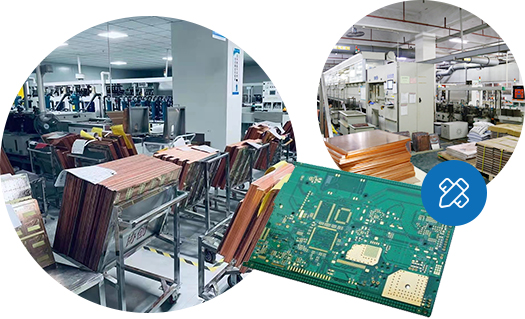Time:2022-09-15 Visit:
1. Reasons for the deformation of the negative film in the processing circuit board process:
(1) Temperature and humidity control failure
(2) The temperature of the exposure machine is too high
2. Solutions for the deformation of the negative film in the processing circuit board process:
(1) Under normal circumstances, the temperature is controlled at 22±2℃, and the humidity is controlled at 55%±5%RH.
(2) Use a cold light source or an aerator with a cooling device to continuously replace the back film
3. Negative film deformation correction process:

The method of changing the hole position: in the case of mastering the operation technology of the digital programmer, first compare the negative film with the drilling test plate, and measure the two deformations of length and width. On the digital programmer, lengthen or shorten the hole position according to the amount of deformation, and use the drill test plate with the lengthened or shortened hole position to fit the deformed negative. This method eliminates the tedious work of splicing films, and ensures the integrity and accuracy of the processed circuit board graphics.
Hanging method: Aiming at the physical phenomenon that the negative film changes with the change of ambient temperature and humidity, put the negative film into a sealed bag before copying the negative film, and hang it for 4-8 hours under the working environment conditions to deform the negative film before copying and make the negative film. becomes very small after copying.
Splicing method: For patterns with simple lines, large line widths, and irregular deformation, the deformed part of the negative can be cut out first, and then re-spliced by the drilled test plate holes and then copied.
Pad Overlap Method: Use holes in the test board to enlarge it to pad size and remove deformed wire pieces to ensure minimum loop width specification.
Texture method: scale up the graphics on the deformed film of the processed circuit board and re-lay the board
Shooting method: Use the camera to zoom in or out on the distorted graphics.